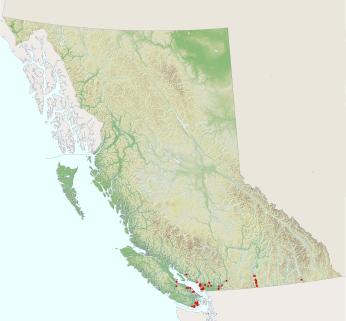The largest dragonfly family in our region – 24 species in eight genera live here and one other species in another genus is a rare visitor. They come in many sizes and colours, many with bold wing markings or coloured veins. Their eyes meet broadly on top of the head. The anal loop in the hindwing is distinctive: foot-shaped with a long toe. Most common around ponds, marshy lakeshores and sluggish streams, the adults dart about and most species spend a lot of time perched horizontally in the sun. Females lay eggs alone or in the company of guarding males. Most dip the tip of their abdomen into the water when releasing the eggs, but some will tap or splash the eggs into wet mud or moss, or simply flick them into a dry pond basin. Some larvae, like those of the emeralds, move sluggishly or squat on the bottom mud; others climb in vegetation.
|
Rare in the southern interior – recorded only from the southern Okanagan Valley and the Kootenay River marshes at Creston. More common on the south coast. Lives in ponds, slow streams and lakes with dense emergent vegetation. While in tandem the female deposits her eggs along the banks in moss or vegetation very close to, or in, the water. The eggs will not hatch until submerged in water.
|
|
